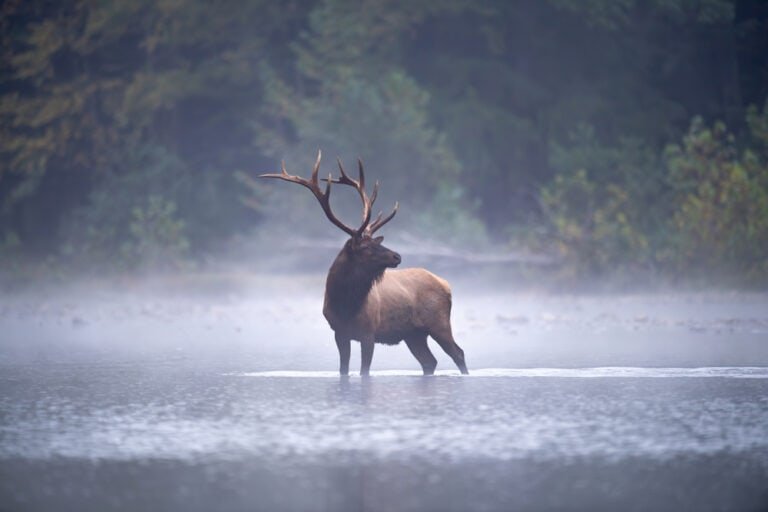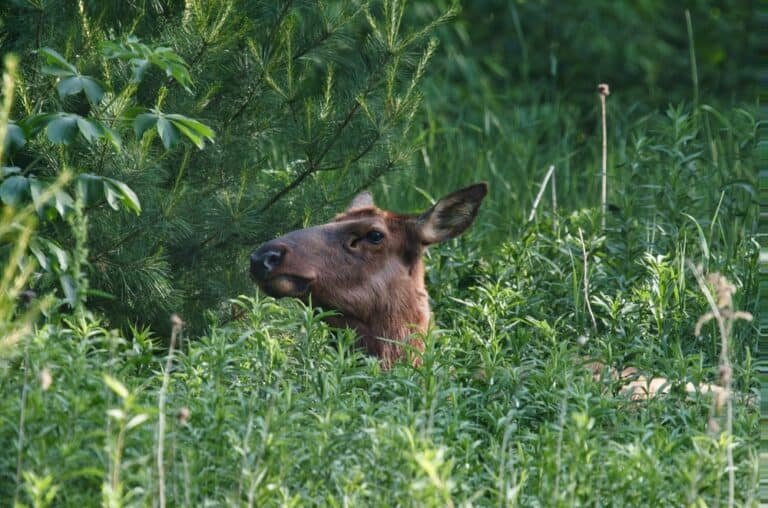Elk Meat Nutrition: Why It’s the Superfood of the Wild
Elk meat, or venison, is a culinary delight enjoyed for centuries. It is renowned for its unique qualities and characteristics that set it apart from other meats. Understanding the essence of elk meat is crucial for those who savor exquisite flavors and those who appreciate the significance of sustainable and ethical food choices.
Brief Overview of Elk Meat as a Culinary Delight
Elk meat, with its tender texture and distinct flavor, has become a sought-after choice among food enthusiasts worldwide. Its popularity can be attributed to the rich heritage associated with game meats and the growing interest in exploring diverse culinary experiences. The unique taste and texture of elk meat add depth and complexity to various dishes, making it an intriguing option for professional chefs and home cooks.
The succulent nature of elk meat makes it suitable for various cooking techniques, allowing for versatility in its preparation. Whether grilled to perfection, slow-cooked to enhance tenderness, or incorporated into savory stews or sausages, elk meat offers endless possibilities to tantalize taste buds.
The Unique Qualities and Characteristics of Elk Meat
To truly appreciate elk meat as a culinary ingredient, it is essential to understand its unique qualities and characteristics that differentiate it from other meats. Elk are magnificent creatures belonging to the deer family with a majestic presence in North America’s vast landscapes. Elk have distinctive features, such as their large antlers during mating season, which make them easily recognizable.
The habitat and diet of these animals greatly influence their flavor profile. Elk are known to graze on natural grasses, herbs, shrubs, bark, berries, and even acorns found within their range—contributing to developing a distinct taste that sets elk meat apart from domesticated meats.
Moreover, comprehending the nutritional value of elk meat allows individuals to make informed dietary choices. Elk meat is notably lean, low in fat content, and high in protein.
Additionally, it is a rich source of essential nutrients like iron, zinc, and vitamin B12. Understanding these nutritional aspects underscores the health benefits of consuming elk meat and the potential positive impact on overall well-being.
Description of Elk as Majestic Animals in the Deer Family
Elk are magnificent creatures belonging to the deer family. They are easily distinguishable by their large size and impressive antlers.
Male elk, called bulls, possess majestic sets of antlers that can span up to six feet in length and weigh as much as 40 pounds. These antlers have multiple branches or tines that contribute to their grandeur and make them an iconic elk symbol.
With a height ranging from four to five feet at the shoulder, elk are one of the largest species in the deer family. Their long legs and slender bodies allow them to move gracefully through various terrains, including forests, mountains, grasslands, and even deserts.
Elk have a reddish-brown coat during summer months that transitions into a darker shade during winter for camouflage. They are highly social animals that inhabit herds composed of females (cows) and their offspring.
Bulls usually join these herds during mating season but spend most of their time in smaller bachelor groups or even solitary when not actively seeking mates. The mating ritual for elk is an awe-inspiring spectacle involving bugling calls by bulls to assert dominance and attract females.

Habitat and Distribution of Elk Across Regions
Elk inhabits diverse ecosystems across North America, Europe, Asia, and New Zealand. In North America, they are widely distributed across regions such as the Rocky Mountains, Pacific Northwest, Midwest states like Colorado and Wyoming, and parts of Canada, including British Columbia and Alberta.
Elk typically prefer areas with a combination of open meadows for grazing purposes along with dense forests for cover against predators. These adaptable animals can thrive in habitats ranging from rugged mountainous terrains to marshlands or semi-arid regions.
Their ability to migrate over long distances in search of suitable food sources and breeding grounds allows them to occupy a wide range of habitats. However, human encroachment and habitat fragmentation significantly challenge their natural distribution patterns.
Hunting and Conservation Efforts
Hunting has been deeply intertwined with the history and culture of elk, playing a crucial role in maintaining healthy populations. Responsible hunting practices, regulated by state wildlife management agencies, help control elk numbers within sustainable limits. These efforts aim to prevent overpopulation, which can lead to habitat degradation due to excessive browsing and competition for limited resources.
Conservation organizations play a vital role in preserving elk populations by actively supporting habitat conservation initiatives, engaging in scientific research on population dynamics, promoting sustainable hunting practices, and advocating for protecting critical migration corridors. Furthermore, revenue generated from hunting permits and licenses contributes significantly to wildlife conservation efforts.
It enables funding for habitat restoration projects, wildlife management programs, and educational initiatives that ensure the long-term viability of these majestic animals. Understanding the background information about elk is essential for appreciating their significance as magnificent animals within the deer family.
Their distribution across different regions reflects their adaptability to diverse habitats. The importance of responsible hunting practices and conservation efforts cannot be overstated when preserving healthy elk populations for future generations to admire and enjoy.
The Nutritional Value of Elk Meat
Comparison with other meats: lean, high protein, low-fat content
It stands out as a nutritional powerhouse when comparing elk meat with other commonly consumed meats. Elk meat is renowned for its incredibly lean nature, making it a favorable choice for health-conscious individuals seeking a well-balanced diet. With an average fat content of only 2-3%, elk meat contains significantly less fat than beef or pork.
This lower fat content contributes to a more favorable nutrient profile and results in a lighter and less greasy culinary experience. Furthermore, elk meat is exceptionally high in protein, making it an excellent choice for athletes and those looking to build and repair muscle tissue.
Protein is essential for various bodily functions and helps promote overall health and well-being. A 3-ounce serving of cooked elk meat provides around 25 grams of premium-quality protein, rivaling the protein content found in beef or chicken.
Rich source of essential nutrients such as iron, zinc, and vitamin B12
Elk meat serves as a treasure trove of essential nutrients vital for optimal health. One key nutrient abundant in elk meat is iron.
Iron plays a crucial role in the production of red blood cells and helps transport oxygen throughout the body. Consuming enough iron-rich foods like elk meat can help prevent iron deficiency anemia and promote healthy circulation.
In addition to iron, elk meat also presents an abundant source of zinc—a mineral necessary for immune function, wound healing, growth and development, DNA synthesis, and repair. Zinc deficiency can compromise immune system function; zinc-dense foods like elk meat can potentially boost your body’s defense against illnesses.
Moreover, elk meat emerges as an exceptional source of vitamin B12. This water-soluble vitamin is crucial in maintaining a healthy nervous system, red blood cell production, and DNA synthesis. Regular consumption of elk meat ensures an adequate intake of this vital vitamin, providing benefits such as improved cognitive function and increased energy levels.
Health benefits associated with consuming elk meat: improved heart health, weight management, etc.
Indulging in elk meat caters to your taste buds and contributes to several health benefits. Firstly, the low-fat content in elk meat helps promote heart health by reducing the risk of cardiovascular diseases.
By incorporating lean meats like elk into your diet while limiting saturated fats from other sources, you can improve your lipid profile and maintain healthy blood pressure levels. Moreover, elk meat is ideal for those seeking weight management or loss goals due to its high protein and low-fat content.
Protein keeps you fuller for longer periods and reduces cravings for unhealthy snacks between meals. Additionally, the low-calorie content of elk meat makes it an excellent option for individuals aiming to meet their nutritional needs while maintaining a calorie deficit.
Furthermore, elk meat offers a more sustainable alternative to conventionally raised meats due to its wild nature and minimal ecological impact. Organic or ethically sourced options can enhance the environmental benefits of consuming this delectable game meat.
Overall, the nutritional value of elk meat showcases its superiority over other meats. It is lean yet packed with essential nutrients that contribute to overall well-being. Incorporating this flavorful protein source into your diet can provide many health advantages while satisfying your culinary desires.
Culinary Uses and Preparation Methods for Elk Meat
Versatility in Various Cuisines: From Traditional American Dishes to International Delicacies
Elk meat, with its rich flavor and tender texture, lends itself well to a wide range of culinary creations. In traditional American cuisine, elk meat has long been celebrated as a staple in hearty dishes like stews, roasts, and burgers. The lean nature of the meat makes it ideal for grilling, as it absorbs smoky flavors while maintaining its natural tenderness.
Furthermore, its versatility extends beyond American cuisine; elk meat is increasingly finding its way into various international delicacies. In European cuisine, you may find elk featured in gourmet sausages or as a substitute for traditional game meats like venison in dishes such as osso buco or tartare.
Popular Cuts: Tenderloin, Sirloin, Ribeye, Ground Meat
When cooking with elk meat, understanding the popular cuts is essential. The tenderloin cut of elk is prized for its tenderness and mild flavor.
It is often compared to beef tenderloin but offers a unique twist that sets it apart. Sirloin cuts from the loin area are lean and flavorful, versatile enough to be used in steak dishes or sliced for stir-fries and kebabs.
Ribeye cuts are marbled with fat, which enhances the flavor profile even further. Ground elk meat has gained popularity due to its versatility and ideal fat-to-lean ratio—perfect for creating mouthwatering burgers or adding depth to pasta sauces and chili recipes.
Descriptions and Characteristics of Each Cut
The tenderloin cut of elk comes from the muscles along the spine’s inner side—a muscle group that does minimal work, resulting in delicate texture. It boasts a fine grain, tenderness, and a mildly sweet flavor.
Sirloin cuts are taken from the hip area and offer a balance of tenderness and flavor. They have a slightly coarser texture than tenderloin, but their robust taste makes them ideal for grilling or pan-searing.
Ribeye cuts come from the rib section of the elk, and their marbling ensures a succulent and juicy eating experience. The intermingling of fat within the lean meat adds richness and enhances tenderness when cooked to perfection.
Ground elk meat is typically made from various trimmings, ensuring a good fat-to-lean ratio. This versatile cut has myriad culinary possibilities due to its ability to absorb flavors when cooked.
Recommended Cooking Methods for Optimal Flavor and Tenderness
It is crucial to handle it with care to achieve optimal flavor and tenderness when cooking elk meat. Due to its leanness, elk meat is susceptible to overcooking, which can result in toughness.
Therefore, cooking elk meat no more than medium-rare or medium on a grill or stovetop is advisable. To lock in moisture while infusing flavor into the meat, marinating or brining techniques work wonders—try using ingredients like herbs, red wine, or soy sauce.
For tenderloin cuts that deserve special treatment due to their delicacy, it’s best to use quicker cooking methods such as broiling or pan-searing at high heat for a short duration. Sirloin cuts can be prepared similarly but are also suitable for grilling on medium heat until medium-rare doneness.
Ribeye cuts benefit from slower cooking methods, such as roasting at lower temperatures to allow the marbled fat time to render down while keeping the surrounding lean meat moist. Ground elk meat can be used interchangeably with ground beef in countless recipes but requires less cooking time due to its lower fat content.
Whether you make burgers, meatballs, or chili, cook it until it reaches an internal temperature of 160°F (71°C) to ensure safe consumption while preserving its juicy tenderness. Elk meat’s versatility in various cuisines and popular cuts like tenderloin, sirloin, ribeye, and ground meat provide endless culinary possibilities.
By understanding the characteristics of each cut and employing recommended cooking methods suited to their specific attributes, you can unlock the optimal flavor and tenderness elk meat offers. So explore the delicious world of elk meat in your kitchen with these exciting culinary techniques!
Unique Flavor Profile and Texture of Elk Meat
Distinctive Taste Compared to Other Game Meats like Venison or Bison
With its distinct flavor profile, Elk meat stands out among other game meats such as venison or bison. Unlike venison, which can sometimes have a stronger and gamier taste, elk meat offers a milder yet robust flavor that appeals to a wide range of palates.
While both elk and bison are known for being lean meats, elk tends to have a more delicate taste than bison’s slightly sweeter and richer flavor. The unique taste of elk is often described as earthy and savory, with notes of sweetness that add depth to various culinary preparations.
Explanation of the Mild Yet Robust Flavor with Hints of Sweetness
Elk meat’s mild yet robust flavor is a result of several factors. Firstly, elk roam freely in their natural habitat, feeding on various plants and grasses. This diverse diet contributes to the complexity of their meat’s flavor.
Additionally, their muscle structure plays an important role in the taste development. Elk muscles are well-exercised due to their active lifestyle, resulting in leaner meat with enhanced flavors than animals living more sedentary lives.
Moreover, the sweetness in elk meat arises from its low-fat content and the animal’s diet choices. Elk predominantly feed on grasses and foliage found throughout their natural habitat.
These natural food sources contribute subtle hints of sweetness within the meat itself. This unique combination renders elk meat an excellent choice for those seeking refined and satisfying flavors.
Impact of Diet on Flavor Development (e.g., Grass-fed vs. Grain-fed)
The impact of an elk’s diet on its flavor development is noteworthy when considering different feeding practices, such as grass-fed versus grain-fed approaches. Elk that are grass-fed, consuming a diet primarily composed of natural vegetation, tend to have a more pronounced earthy flavor. The presence of herbs, shrubs, and wildflowers in their diet imparts unique aromatic compounds into the meat, contributing to its characteristic taste.
On the other hand, grain-fed elk may exhibit a slightly milder flavor profile due to the consumption of commercially formulated feeds. While this alters the taste somewhat, it can also result in meat with a hint of sweetness due to the grain’s natural sugars.
Whether grass-fed or grain-fed, elk meat retains its inherent tenderness and unique texture while acquiring subtle nuances that reflect their respective diets. The combination of a mild yet robust flavor with hints of sweetness, influenced by both diet choices and well-exercised muscle structure, makes elk meat an exceptional culinary experience.
Its distinct taste distinguishes it from other game meats like venison or bison. Whether enjoying a tenderloin steak delicately seasoned or incorporating ground elk into hearty stews and sausages, the remarkable flavor profile elevates any dish it graces.
Elk Hunting Techniques and Regulations
Popularity among hunters due to challenging nature
Elk hunting has captured the imaginations of hunters worldwide, and its popularity can be attributed to its inherent challenge. Many hunters are drawn to the thrill of pursuing such majestic creatures, knowing that elk possess remarkable agility, acute senses, and an instinct for evading human presence.
The vast landscapes upon which elk roam make it a truly exhilarating experience for those seeking an adrenaline rush and testing their skills as hunters. From stalking elusive herds through dense forests to enduring long treks across rugged terrains, elk hunting demands patience, perseverance, and a deep understanding of the animal’s behavior.
Elk hunting seasons across different regions
The timing of elk hunting seasons varies across different regions and is carefully regulated to ensure sustainable populations while providing ample hunting opportunities. In North America, where elk are most commonly hunted, states establish specific dates for each season based on population health, conservation objectives, and habitat conditions.
Generally speaking, most elk hunting seasons occur during autumn when the animals are more active due to mating season (known as the rut) or in late summer when they migrate to lower elevations for food before winter. Each state sets its own unique set of regulations regarding hunting seasons within its boundaries.
For example, in Colorado—one of the largest elk populations—elk hunting is divided into various game management units (GMUs), each with season dates and restrictions. These regulations help control harvest numbers and prevent overexploitation of populations by ensuring that only a limited number of tags or licenses are issued per GMU.
Regulations regarding licenses, tags, and conservation practices
To participate in elk hunting legally and ethically, prospective hunters must adhere to strict regulations set forth by governing bodies. These regulations govern the issuance of licenses and tags, which grant hunters the right to hunt specific areas and animals during designated seasons. Wildlife management authorities determine the number of available licenses and tags based on population health assessments and conservation goals.
Licenses are typically obtained through a lottery system or by accruing preference points over time (which increases the chances of being selected in subsequent lotteries). Additionally, hunters may need to complete hunter education programs or pass proficiency tests to demonstrate their knowledge of ethical hunting practices, firearm safety, and wildlife conservation principles.
Conservation practices play a crucial role in elk hunting regulations as well. Wildlife management agencies work diligently to balance providing hunting opportunities and safeguarding long-term population health.
Measures such as bag limits (restricting the number of animals an individual can harvest), antler point restrictions (ensuring that young bulls have a chance to mature), and habitat enhancement programs are implemented to protect elk populations from overhunting and preserve their ecosystems. By implementing these meticulous regulations, hunting authorities strive to ensure sustainable elk populations for future generations while allowing hunters to engage in this challenging pursuit.
Environmental Impact
The consumption of elk meat has both positive and negative environmental implications. On the positive side, elk hunting is crucial in wildlife management and conservation efforts.
By carefully controlling elk populations through regulated hunting seasons, authorities can prevent overpopulation, leading to habitat degradation and resource competition. Additionally, revenue generated from hunting licenses and tags contributes to funding conservation projects aimed at preserving natural habitats for elk and other species.
However, it is important to consider the potential negative impacts of hunting on the environment. Increased human presence in elk habitats during hunting seasons can disturb other wildlife species and disrupt their natural behavior patterns.
Hunting practices must be conducted responsibly to minimize these disturbances and maintain the overall ecological balance. Furthermore, while raising domestic livestock requires large amounts of land and resources, wild game like elk naturally roam vast areas in search of food.
This makes them more environmentally sustainable than traditional livestock farming methods, often contributing to deforestation and water pollution. The carbon footprint of raising wild game for meat is significantly lower than conventional agriculture.

Conclusion
Elk meat offers a delectable culinary experience with its unique flavor profile and tender texture. Not only does it provide exceptional nutritional value as a lean protein source rich in essential nutrients, but it also has a lower environmental impact compared to traditional livestock farming practices.
By understanding the background of these majestic animals, their habitat requirements, and proper hunting regulations for maintaining healthy populations, we can continue enjoying high-quality elk meat while respecting nature’s delicate balance. So whether you savor an elegant medallion of grilled elk tenderloin or relish a hearty bowl of slow-cooked elk stew, you can enjoy knowing that your choice supports sustainable consumption practices.
A thoughtful approach towards hunting regulations alongside responsible consumption can contribute to preserving our natural landscapes and fulfilling our culinary desires. Let us embrace the richness that elk meat brings to our tables, appreciating it as a gift from nature and a testament to our ability to coexist harmoniously with the environment.







I was looking through some of your posts on this website and I
think this site is really informative! Continue posting.Leadership